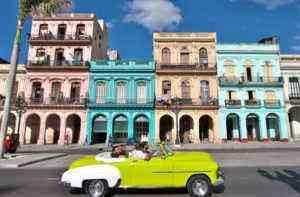Fodor's Expert Review El Malecón
Havana's famous Malecón, sheltered by a sea wall, runs west for 7 km (4 miles) from La Punta (where it's also known as Avenida Antonio Maceo) and the harbor's entrance to the Santa Dorotea de Luna de la Chorrera fortress, near the mouth of the Río Almendares. Although it was designed in 1857 by a Cuban engineer, it wasn't built until 1902, thanks, in part, to the American capital that flowed to the island after the Spanish-American War. Once an opulent promenade flanked by brightly painted houses, the Malecón today is dark and dilapidated, the houses crumbling, and the wide limestone walkway broken and eroded. Yet it still has its charms. As it faces north, it offers spectacular views of both sunrise and sunset—perhaps accounting for the belief that there's not a single habanero who hasn't professed love eternal here at one time or another. Crashing waves and the rainbows created from their spray and the sun adds to the Malecón's magic.
As you walk, look for... READ MORE
Havana's famous Malecón, sheltered by a sea wall, runs west for 7 km (4 miles) from La Punta (where it's also known as Avenida Antonio Maceo) and the harbor's entrance to the Santa Dorotea de Luna de la Chorrera fortress, near the mouth of the Río Almendares. Although it was designed in 1857 by a Cuban engineer, it wasn't built until 1902, thanks, in part, to the American capital that flowed to the island after the Spanish-American War. Once an opulent promenade flanked by brightly painted houses, the Malecón today is dark and dilapidated, the houses crumbling, and the wide limestone walkway broken and eroded. Yet it still has its charms. As it faces north, it offers spectacular views of both sunrise and sunset—perhaps accounting for the belief that there's not a single habanero who hasn't professed love eternal here at one time or another. Crashing waves and the rainbows created from their spray and the sun adds to the Malecón's magic.
As you walk, look for rectangles carved into the stone. These were once (and are still used as) sea baths, which fill at high tide and allowed people to splash about, safe from both currents and sharks. Just west of the Hotel Nacional you'll come to Monumento alMaine, honoring the 260 American sailors killed in the 1898 explosion of that U.S. warship, which was visiting Havana in a display of American might. The event lead to what the United States calls the Spanish-American War (for Cubans this was the final stage of their War of Independence, which began in 1868) followed by a period of heavy U.S. involvement in Cuban affairs. A plaque dedicated by the Castro government here reads: "To the victims of the Maine, who were sacrificed by imperialist voracity in its eagerness to seize the island of Cuba."
READ LESS



